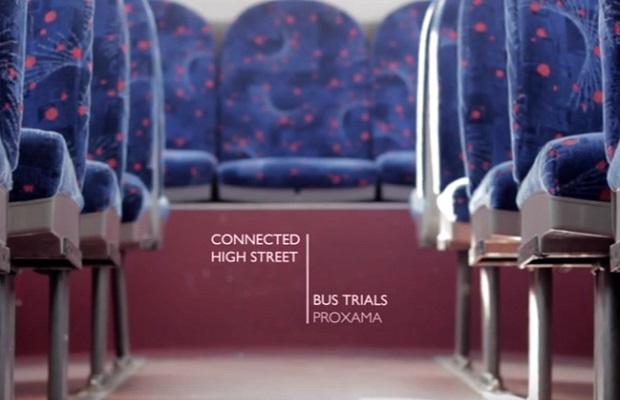Passengers on London buses could soon get push notifications with real-time travel updates and in-app ads sent to their mobiles as they travel through the capital.
The new service comes via a collaboration between mobile marketing company Proxama and Transport for London.
Under the deal, commuters on some 500 Transport for London (TfL) buses can now receive real-time travel updates and relevant location-based advertising using transport app developer Mapway’s Bus Times London app.
The service uses a Bluetooth Low Energy (BLE) beacon network established by out-of-home media provider Exterion Media and Proxama.
The London buses were equipped with BLE beacons in July 2015. Proxama also launched the MyStop physical web service with support from Google and Exterion Media across the beacon-equipped buses in March this year.
Beacons are small chips that use Bluetooth to connect to smart devices like phones and tablets to transmit messages or ads, much like a pop-up on a computer.
Beacons are already being used in Euston to help blind people navigate around the station, and users shopping on Regent’s Street can sign up to an app that pings them deals as they browse stores.
In 2014, beacons were installed in mannequins to digitally track shoppers and serve them relevant information.
The service launched for Android users of Bus Times London on 17 March and delivers:
Sticky9 (part of the PhotoBox group) is seeing an average click-through rate of 14.5 per cent, much higher than the typical one to two per cent of non-beacon-triggered advertising. Beacon-triggered real-time travel update notifications are receiving a click-through rate of 44 per cent.
“This collaboration is a huge milestone for the proximity marketing industry. App owners are looking for ways to increase active user numbers and establish new sources of revenue, and beacons can deliver on both objectives. Brands are also looking for ways to better understand and more accurately engage with their target audiences, so campaigns like this deliver a win-win – with the results speaking for themselves,” said Jon Worley, CEO of Proxama’s marketing division. “This partnership is yet another indication that 2016 is the year that beacon technology for marketing gains significant traction.”
David James, CEO of Mapway, said: “We chose to work with Proxama and Exterion Media because, using beacons, we can ensure opted-in users only receive relevant and timely notifications and that content is both powerful and contextual. This platform has enormous potential for brands, and we look forward to helping them better engage with consumers. Similarly, we hope adverts will become of more interest to users of our apps, replacing volume with quality and relevance”
“With 2.3 billion passenger journeys made on London buses a year, the partnership creates an innovative platform for brands that want access to this hard-to-reach audience exclusively. The partnership also provides consumers with relevant, timely, and engaging content in an unobtrusive way. Not only can brands better target consumers, but the information collected will provide unique insights that will ensure future efforts are even more successful – allowing us to continue to make the everyday inspirational,” said Jason Cotterrell, managing director at Exterion Media UK.
